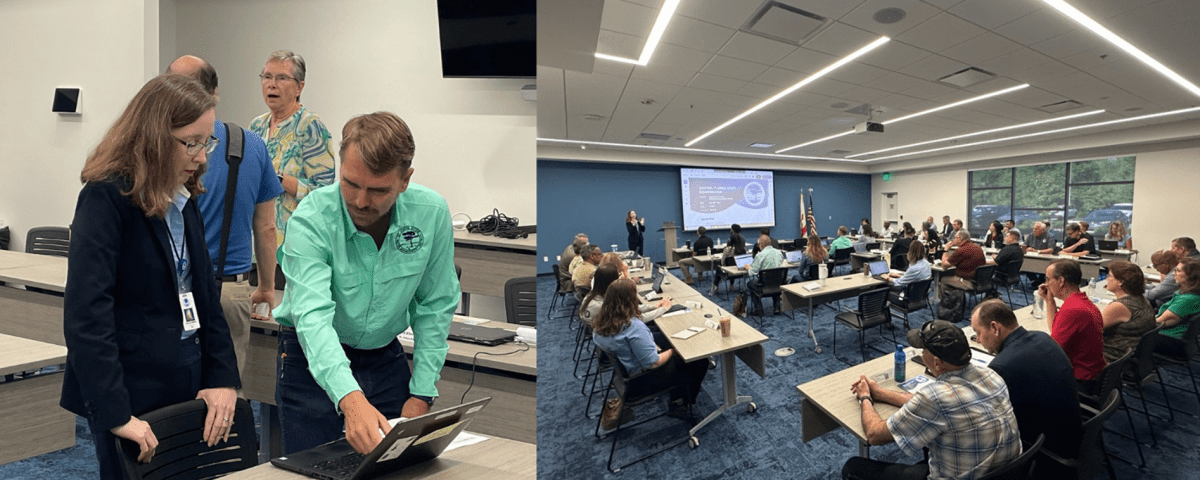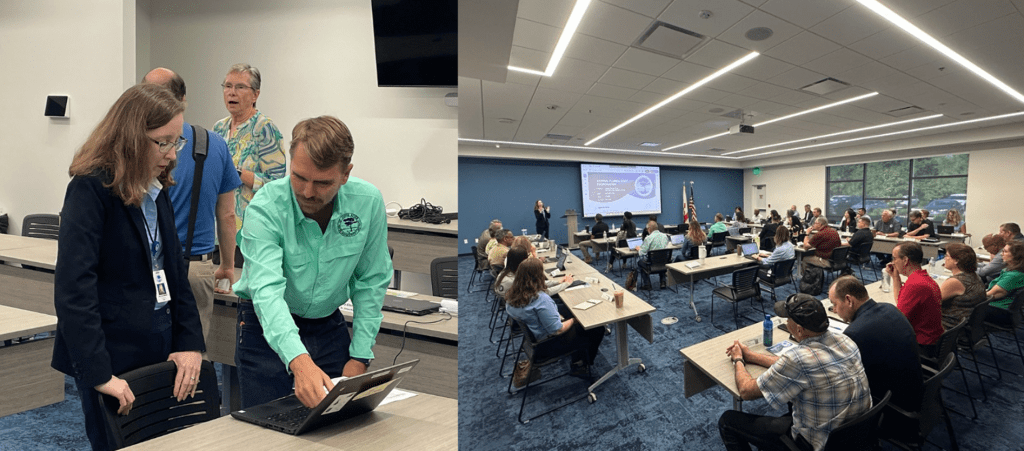Central Florida agencies unite to enhance hurricane preparedness and flood management

Left: Assistant Executive Director Mary Ellen Winkler speaks with District Emergency Coordinator Officer Chris Kinslow during the Central Florida Coordination Meeting. Right: St. Johns River Water Management District brought local and regional representatives together at the recent Central Florida Resilience Coordination meeting.

Left: Assistant Executive Director Mary Ellen Winkler speaks with District Emergency Coordinator Officer Chris Kinslow during the Central Florida Coordination Meeting.
Right: St. Johns River Water Management District brought local and regional representatives together at the recent Central Florida Resilience Coordination meeting.
Ahead of the Atlantic hurricane season, key partners in hurricane preparedness and flood management gathered at the Central Florida Coordination meeting hosted by the District.
Representatives from the South Florida Water Management District, local municipalities, county governments and state planning agencies — including the Florida Flood Hub and the East Central Florida Regional Planning Council — met to share updates and discuss strategies aimed at strengthening regional resilience.
The meeting, held at the District’s Apopka Service Center, focused on enhancing communication, sharing key updates and fostering interagency collaboration to improve preparedness and response to flooding risks posed by hurricanes and severe weather events in Central Florida.
“Effective hurricane preparedness begins long before the first storm forms,” said the District’s Chief Resilience Officer Tom Frick. “This meeting underscores our commitment to working with regional partners to leverage resources and expertise. Our shared commitment to resilience is essential for protecting Central Florida before, during and after storm events.”
Frick provided an update on the District’s real-time flood forecasting model, which is scheduled for completion in 2027. The model will offer water level and flow predictions up to 10 days in advance, helping local governments manage flood risks. Its success relies on collaboration with local authorities to integrate existing stormwater models and develop effective public alert systems.
Chris Kinslow, the District’s emergency coordinating officer, emphasized the importance of effective communication during emergencies and reviewed flood control structure operations in the Upper St. Johns River Basin and the Upper Ocklawaha River Basin.
Local government representatives discussed resident communication strategies, reviewed current flood management efforts and projects and identified opportunities for stronger emergency coordination. With Central Florida’s complex topography and growing population, collaborative planning remains critical to minimizing flood impacts and ensuring public safety.
Residents are encouraged to support community preparedness by taking proactive steps before and during hurricane season, such as keeping storm drains clear of debris, reporting clogged ditches to local governments, retrofitting buildings for water resistance and securing flood insurance through the National Flood Insurance Program.
For more information on the District’s role in flood protection and storm preparedness and response, visit www.sjrwmd.com/storm.
New to Florida or need a refresher on how stormwater systems? Learn more about stormwater design, management, and its limitations at www.sjrwmd.com/education/stormwater-systems.
Photos and video from the meeting, along with footage from past hurricane impacts in Central Florida, are available in our media library.

